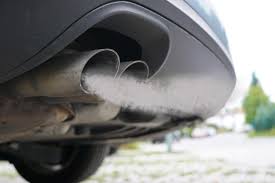1ZZFE 180PS NA Tune
A 1ZZ-FE Engine
Shop At Sites Such as MonkeyWrenchRacing(MWR), Wiseco, CP Pistons, or JE Pistons, For Builds!
Hit The 180-190PS Mark!
If You Dont Care For Emissions, Build Over The 200+PS Mark, With Blot Built Mods!
This Is Fitted For Cars For Under 2750LBS!
Mod The Transmission and Car!
NA Emissioned Free For Most States!
Get Better And Approved Performance Tires!
Get 4A-GE Power With Premium Fuel!
Be The Perfect Driver! HIGH 14 Second Or Lower NA Car!
The Toyota 1ZZ-FE engine, a 1.8-liter inline-four, is known for its fuel efficiency and reliability rather than raw performance. Found in models like the Toyota Corolla, Matrix, and Celica GT, it’s a popular engine among budget-minded enthusiasts. While the engine wasn't designed for high-revving performance like its cousin, the 2ZZ-GE, it still holds some potential when tuned carefully. The key for many drivers, especially in emissions-regulated states, is to find a balance between added horsepower and full emissions compliance.
A naturally aspirated build that keeps emissions equipment intact and functional can push the 1ZZ-FE to about 160–180 horsepower at the crank, up from its stock range of 130–140 hp. This equates to approximately 135–155 horsepower at the wheels. These gains require a thoughtful combination of intake, exhaust, camshaft, and tuning modifications, all chosen with emissions compliance in mind. By using CARB-approved components and retaining all emissions systems, a noticeable bump in power can be achieved without running afoul of environmental laws.
A 1ZZ-FE Cylinder Head
The first area of focus in an emissions-friendly build is improving airflow. A CARB-legal cold air intake helps increase the volume and quality of air entering the engine, typically adding 5–7 horsepower. A CARB-certified header and a high-flow catalytic converter can increase exhaust flow while maintaining emissions legality, contributing another 5–10 horsepower. A well-designed cat-back exhaust doesn’t directly affect emissions but further supports flow improvements, yielding an additional 2–5 horsepower. These bolt-ons alone can collectively boost power by around 15–20 hp at the crank.
To fully unlock the potential of these hardware upgrades, a conservative tune is essential. Using a piggyback ECU system like the Greddy e-Manage, which retains the factory ECU’s control of emissions systems, you can optimize air-fuel ratios and ignition timing for another 5–10 horsepower. Additionally, mild performance camshafts designed to work with stock emissions systems can add 10–15 horsepower. These cams maintain proper idle quality and vacuum pressure so that emissions monitors stay “ready” and legal.
Other supporting modifications, such as lightweight pulleys or a lightened flywheel, won’t directly add horsepower but can improve throttle response and acceleration, making the engine feel more powerful without altering its emissions profile. Optional mild head work, like port and polish jobs, can offer small gains (around 5 hp) and enhance the effectiveness of other upgrades. All of these components should be chosen carefully to ensure no removal or disabling of O2 sensors, EGR systems, or evaporative emissions equipment.
A 1ZZ-FE Long Block
In summary, while the 1ZZ-FE isn’t a high-output performance platform, it can be built into a solid and responsive NA engine while staying emissions compliant. With smart part selection and a conservative, emissions-safe tune, up to 180 crank horsepower is a realistic and legal goal. This makes the 1ZZ-FE a cmpelling option for enthusiasts who want an enjoyable daily driver that passes smog checks without issue. For those who need more power beyond this point, however, forced induction or an engine swap may be the next step, but within the NA realm, emissions-legal gains are absolutely achievable.
A Legal Big Bore 1ZZ-FE Engine!
When upgrading the Toyota 1ZZ-FE engine for more power, one effective route is using a big bore kit to increase displacement and performance. However, for enthusiasts living in emissions-regulated regions, it’s important that these upgrades remain street legal. Fortunately, there are emissions-friendly bore kits and build strategies that allow you to gain horsepower without violating regulations. Mild overbores, such as moving from the stock 79.0 mm piston size to 79.5 mm, are considered safe, especially when paired with OEM-style components and careful tuning.
Companies like MonkeyWrenchRacing (MWR) offer short blocks and forged piston kits that maintain compression ratios close to stock, making them suitable for emissions-compliant builds. Even more aggressive overbores, such as 81.5 mm or 82 mm, can be made emissions-legal with the use of Darton sleeves and a properly calibrated ECU tune that retains oxygen sensor and EVAP functionality. As long as the emissions systems, including catalytic converters, O₂ sensors, and EVAP components remain intact and functional, the vehicle can still meet emissions standards, even with increased displacement and performance.
To stay compliant, engine builders should prioritize components and tuning that preserve the engine's ability to operate within factory emissions parameters. This means avoiding excessive compression increases, retaining the stock air/fuel ratio, and ensuring closed-loop tuning functions properly. With careful planning and the right parts, such as forged pistons, sleeved blocks, and conservative tuning, a big bore 1ZZ-FE build can be both powerful and emissions-legal. It's a great example of how smart engineering can enhance performance without sacrificing street legality.
Every motor and transmission has a weakness. It is very important to address your motor and transmission for weaknesses before modifying them.
Check With Your Local Laws And Regulations Before Modifying, Swiping Motors, And Transmission..👈
Important Information Before Swapping A Motor And Transmission..👈
The Importance Of Transmission Builds..👈
How To Build A Forged Engine..👈






Comments
Post a Comment